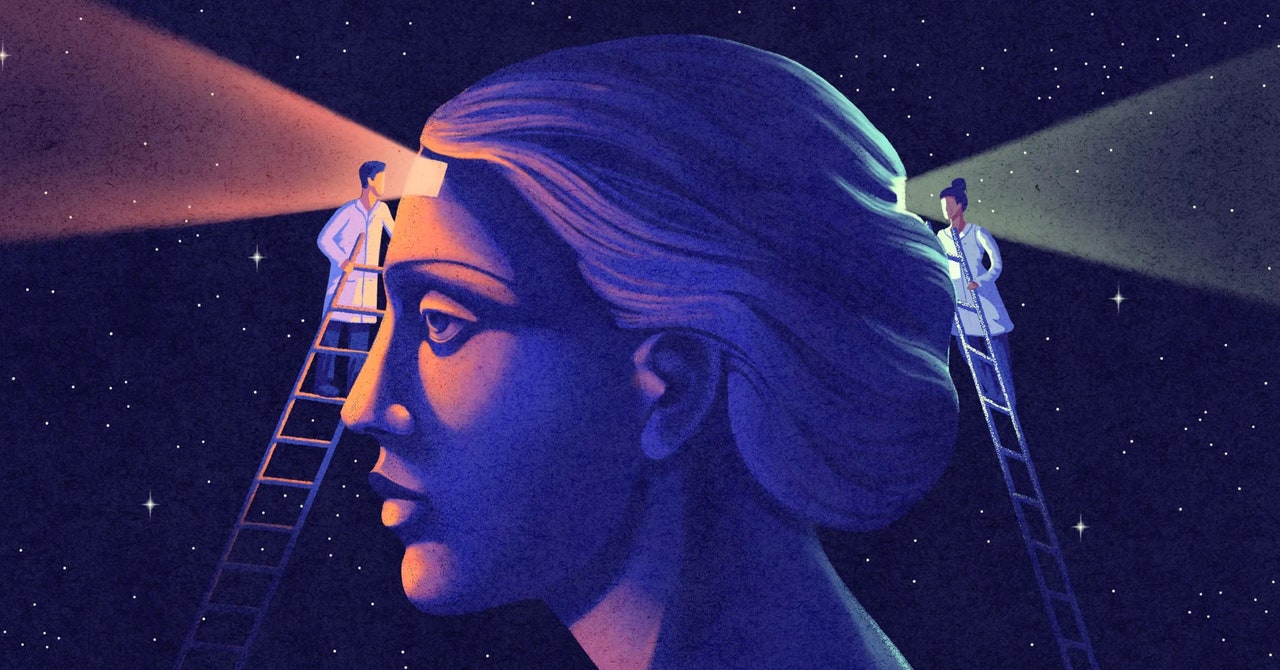
The original version of this story appeared in Quanta Magazine.
Science routinely puts forward theories, then batters them with data till only one is left standing. In the fledgling science of consciousness, a dominant theory has yet to emerge. More than 20 are still taken seriously.
It’s not for want of data. Ever since Francis Crick, the codiscoverer of DNA’s double helix, legitimized consciousness as a topic for study more than three decades ago, researchers have used a variety of advanced technologies to probe the brains of test subjects, tracing the signatures of neural activity that could reflect consciousness. The resulting avalanche of data should have flattened at least the flimsier theories by now.
Five years ago, the Templeton World Charity Foundation initiated a series of “adversarial collaborations” to coax the overdue winnowing to begin. This past June saw the results from the first of these collaborations, which pitted two high-profile theories against each other: global neuronal workspace theory (GNWT) and integrated information theory (IIT). Neither emerged as the outright winner.
The results, announced like the outcome of a sporting event at the 26th meeting of the Association for the Scientific Study of Consciousness (ASSC) in New York City, were also used to settle a 25-year bet between Crick’s longtime collaborator, the neuroscientist Christof Koch of the Allen Institute for Brain Science, and the philosopher David Chalmers of New York University, who coined the term “the hard problem” to challenge the presumption that we can explain the subjective feeling of consciousness by analyzing the circuitry of the brain.
Onstage at NYU’s Skirball Center, following interludes of rock music, a rap performance on consciousness, and the presentation of the results, the neuroscientist conceded the bet to the philosopher: The neural correlates of consciousness had not yet been nailed down.
Nevertheless, Koch proclaimed, “It’s a victory for science.”
But was it? The event has received mixed reviews. Some researchers point to the failure to meaningfully test the differences between the two theories. Others highlight the success of the project in driving consciousness science forward, both by delivering large, novel, skillfully executed data sets and by inspiring other contestants to engage in their own adversarial collaborations.
The Correlates of Consciousness
When Crick and Koch published their landmark paper “Towards a Neurobiological Theory of Consciousness” in 1990, their aim was to place consciousness—for 2,000 years the stomping ground of philosophers—onto a scientific footing. Consciousness in its entirety, they argued, was too broad and controversial a concept to serve as a starting point.
Instead, they focused on one scientifically tractable aspect of it: visual perception, which involves becoming conscious of seeing, for instance, the color red. The scientific goal was to find the circuitry that correlated with that experience, or, as they put it, the “neural correlates of consciousness.”
Decoding the first stages of visual perception had already proved a fertile ground for science. Patterns of light falling on the retina send signals to the visual cortex in the back of the brain. There, upwards of 12 distinct neural modules process the signals corresponding to edges, color, and movement in the images. Their output combines to build up a final dynamic picture of what we consciously see.
What clinched the usefulness of visual perception for Crick and Koch was that the final link in that chain—consciousness—could be detached from the rest. Since the 1970s, neuroscientists have known of people with “blindsight,” who have no experience of vision because of damage to their brain yet can navigate a room without bumping into obstacles. While they retain the ability to process an image, they’re missing the ability to be conscious of it.

